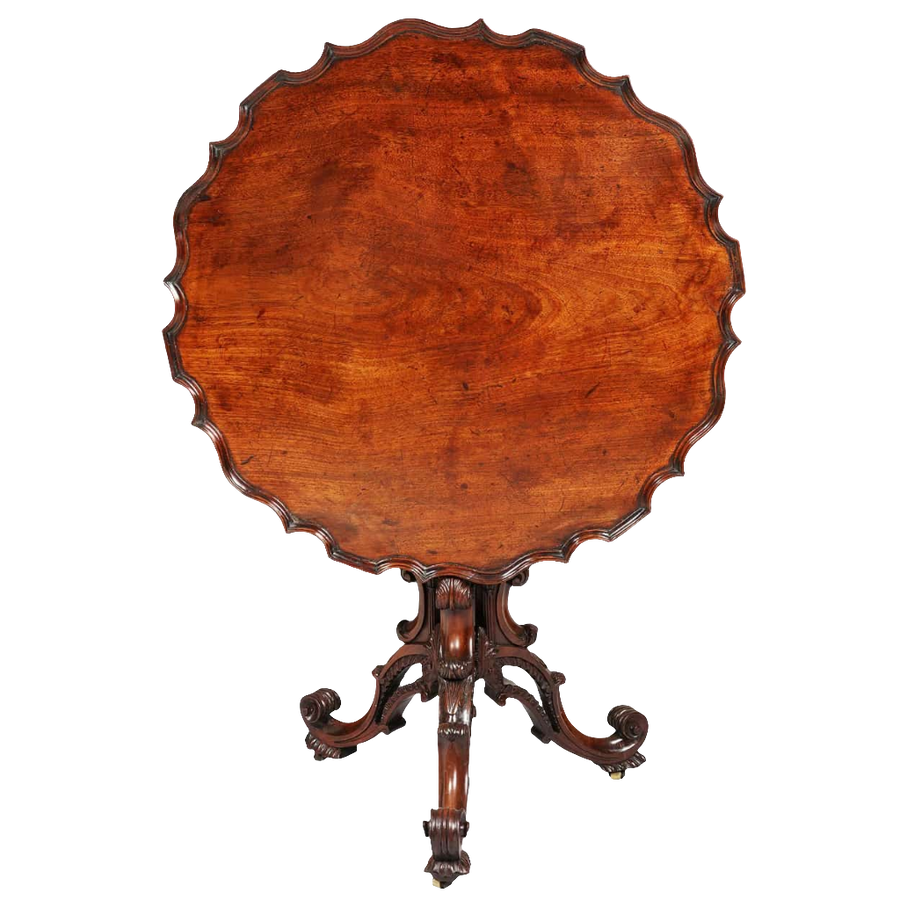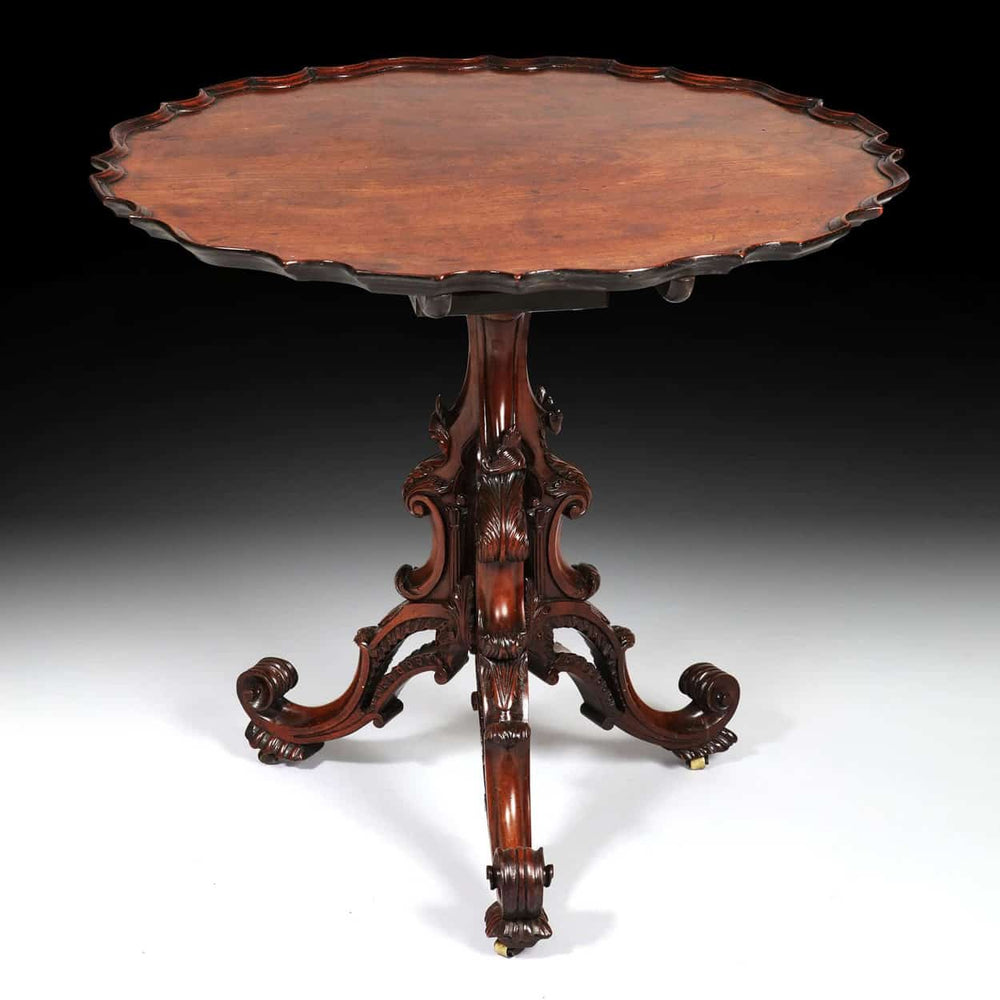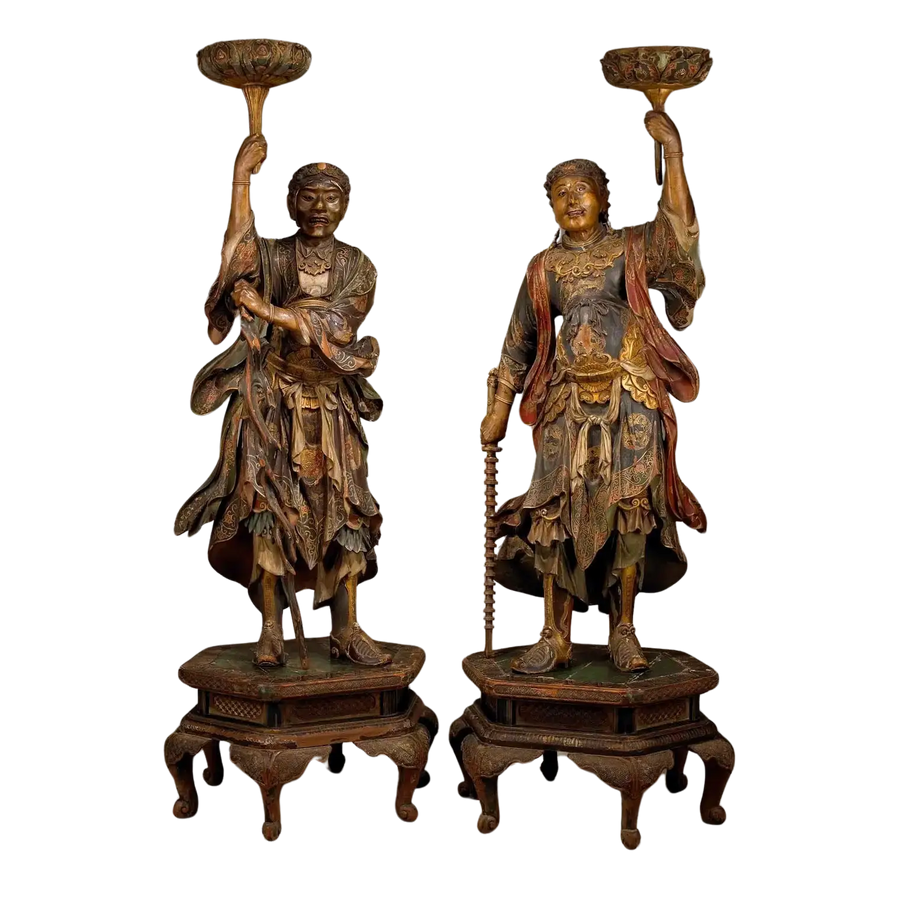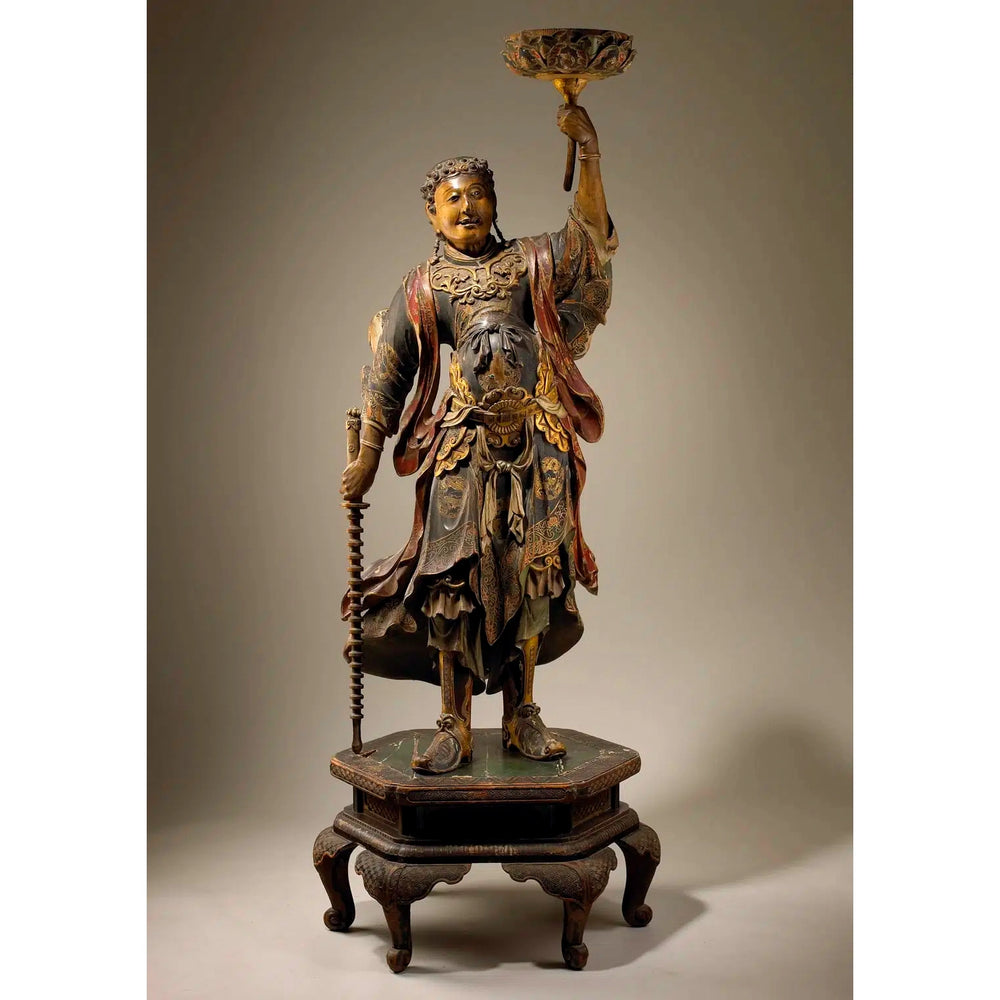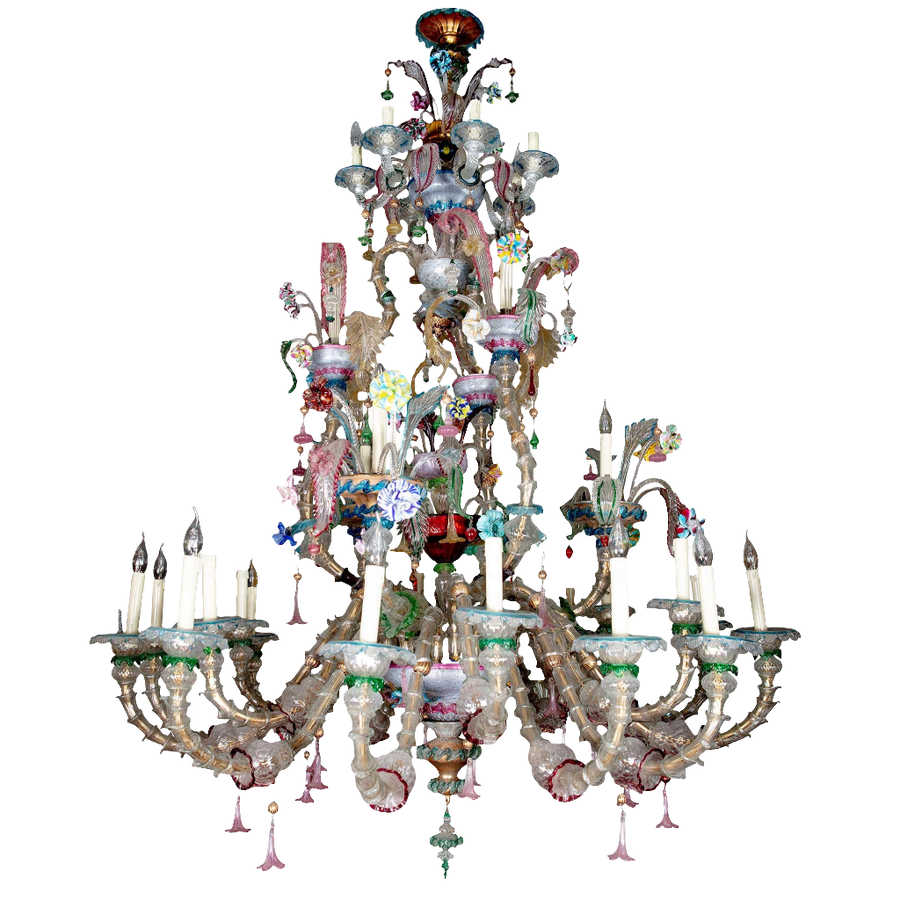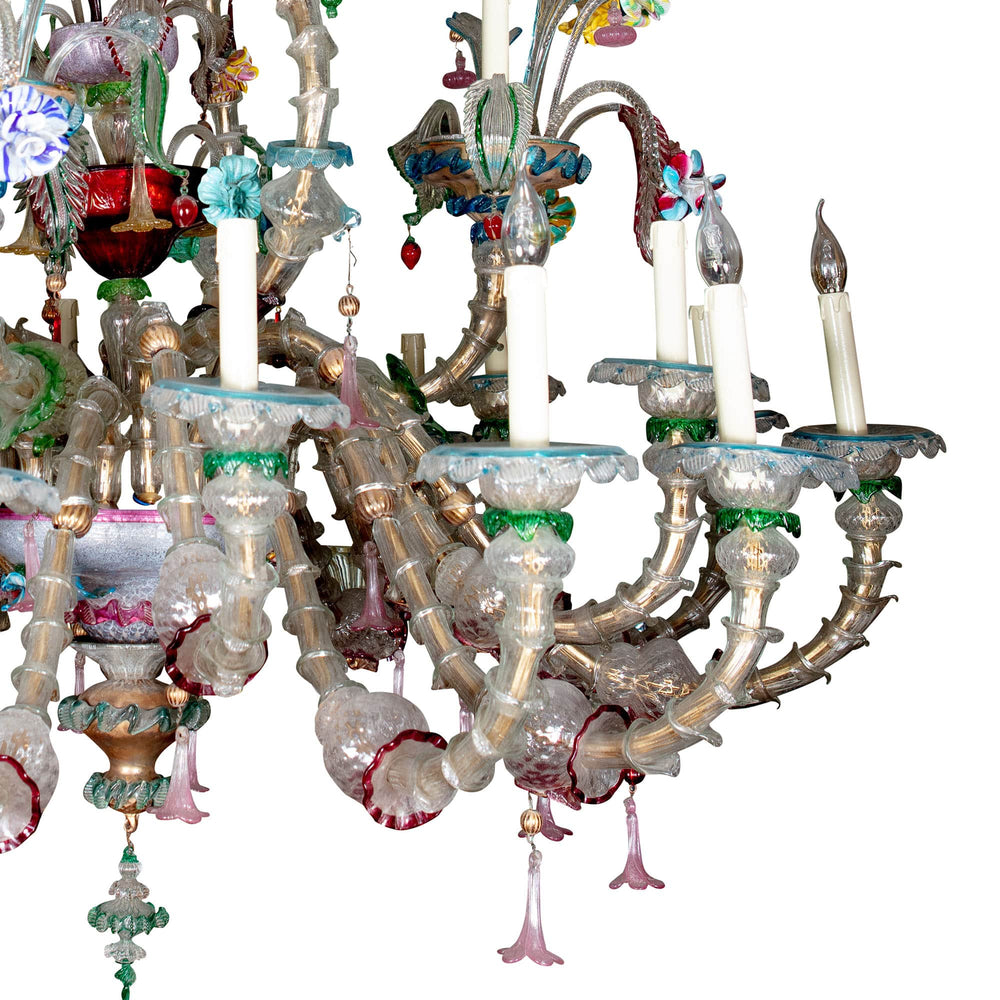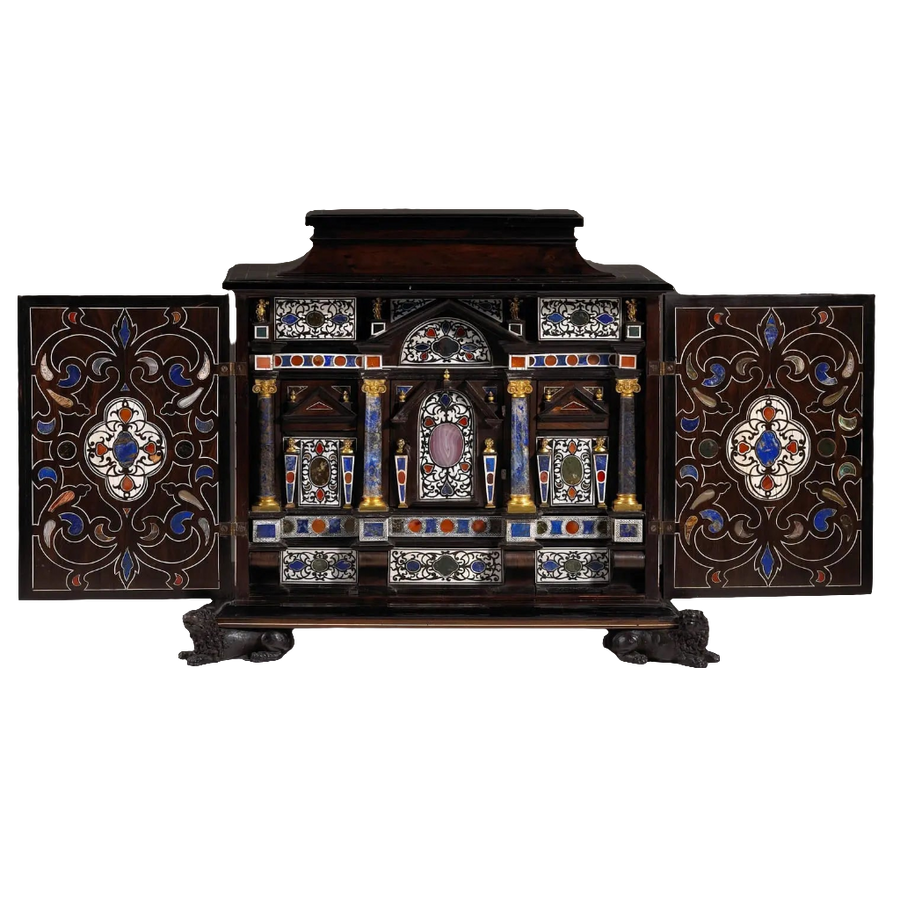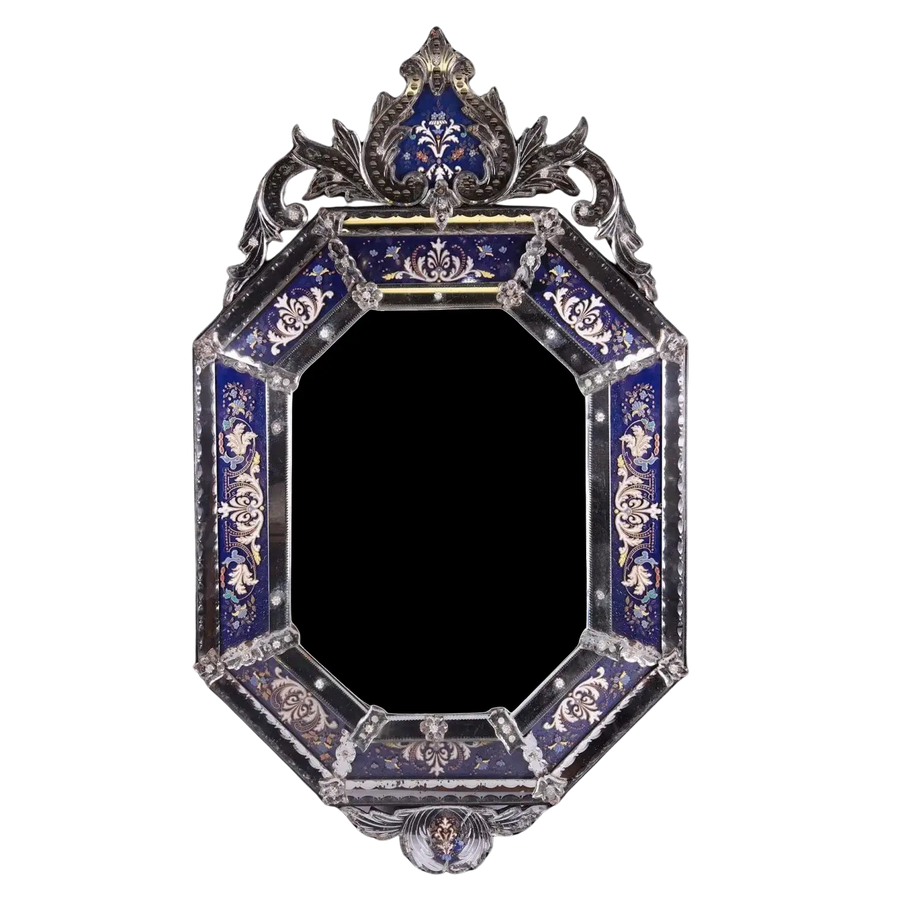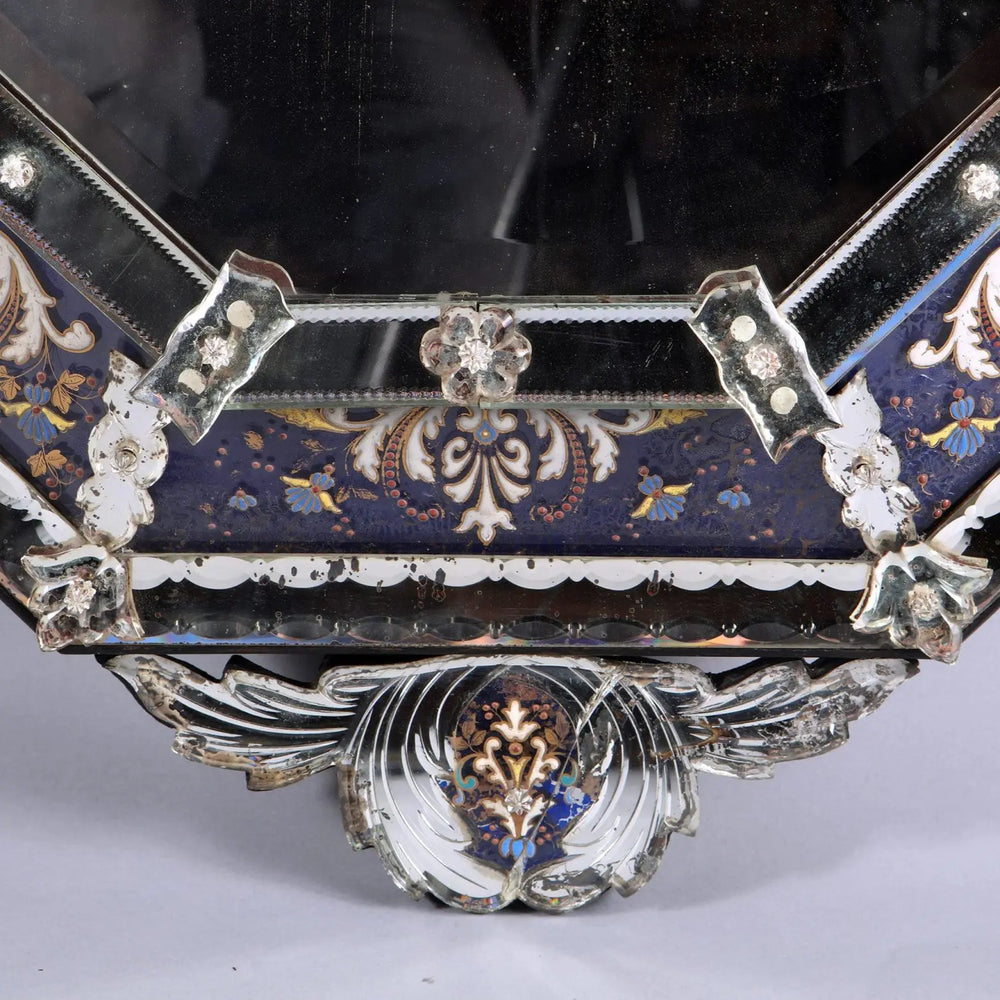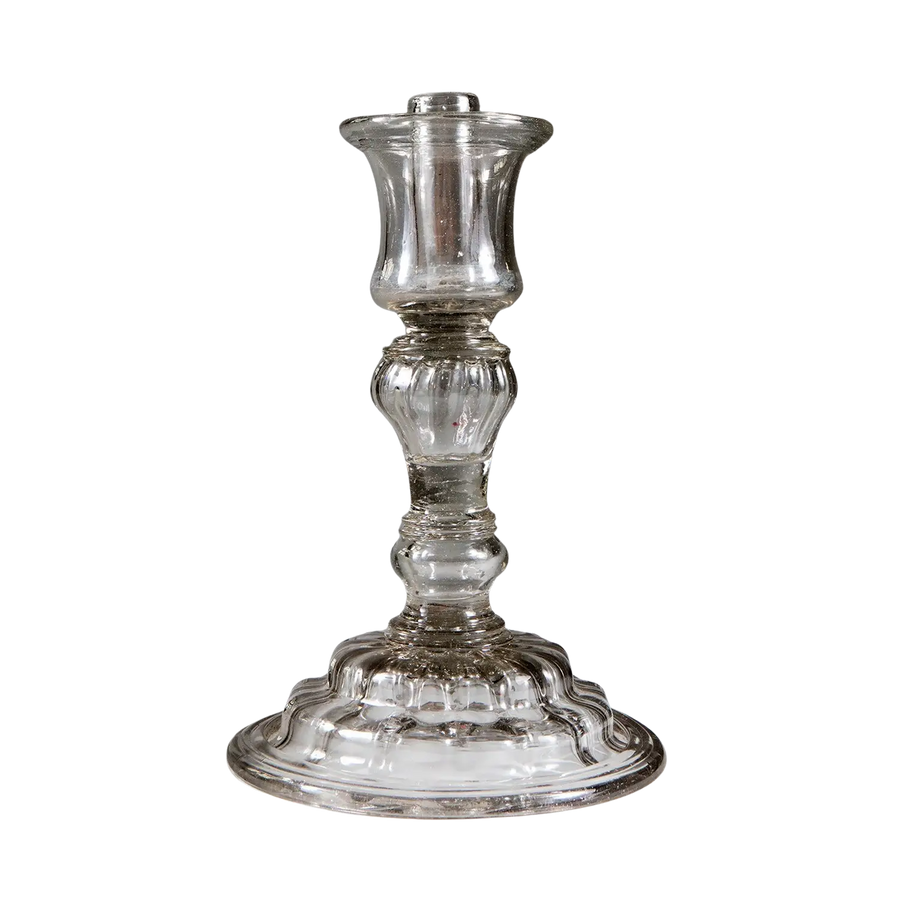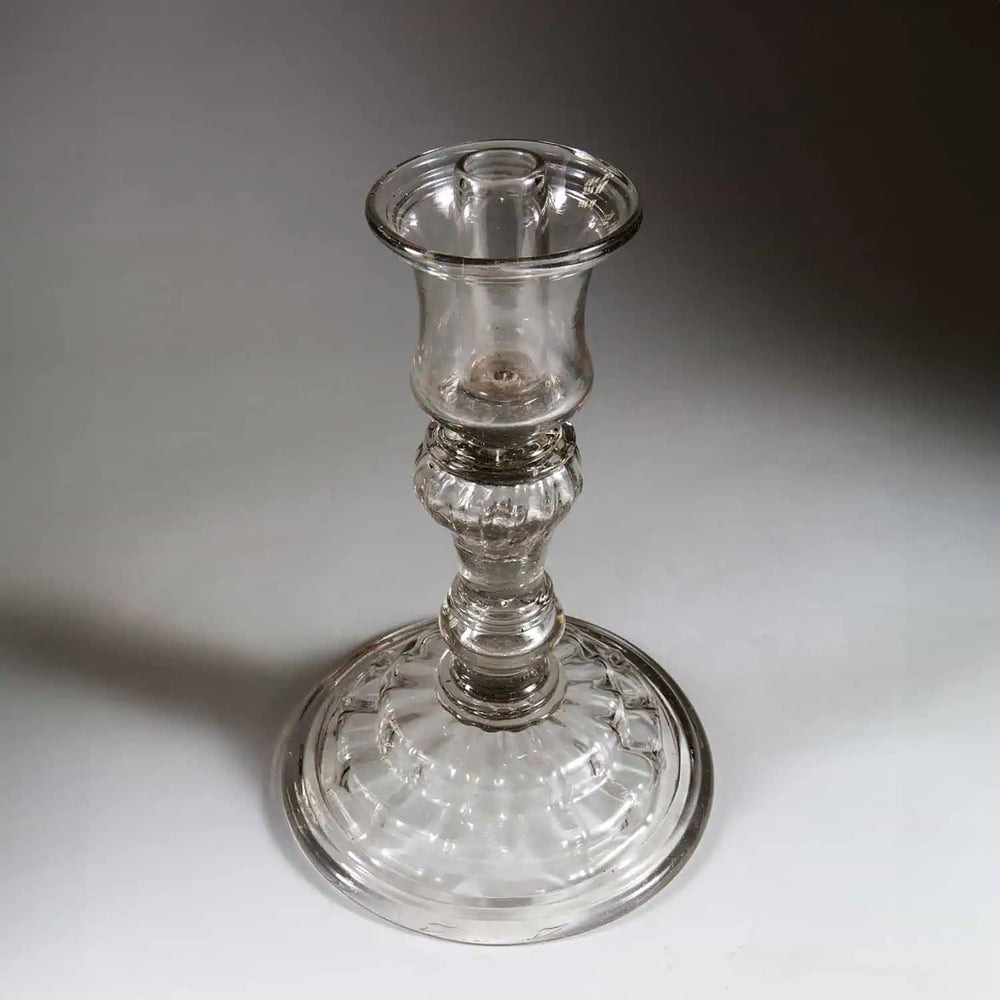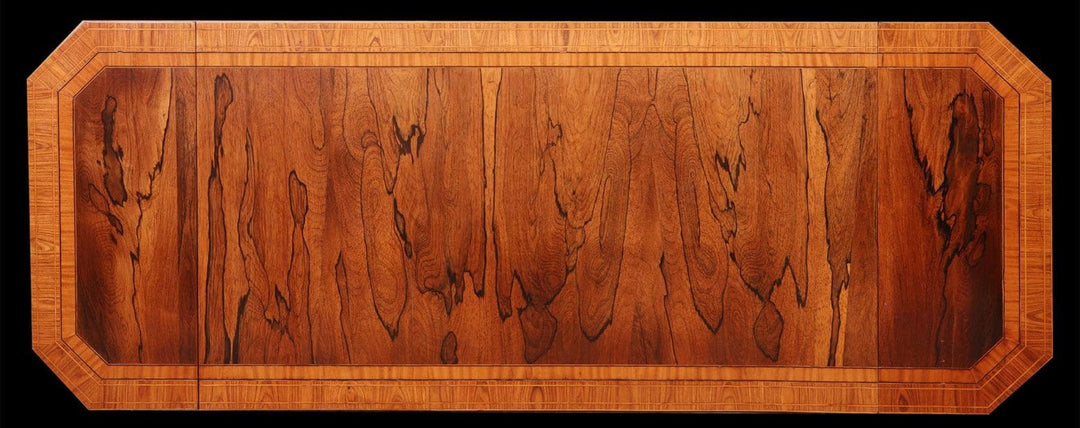During the 18th and 19th centuries, Venice retained its reputation as a hub for decorative arts, shaped by longstanding maritime trade, religious institutions, political shifts, and a rich cultural legacy.
Trade and Material Exchange
- Venice maintained active trading relationships with the Ottoman Empire, the Balkans, the Middle East, and Asia.
- This exchange brought rare materials such as exotic marbles, fine textiles, and pigments used in decorative production.
- These imports influenced both the aesthetic and technical qualities of Venetian craftsmanship.
Murano Glassmaking
- Murano, located in the Venetian Lagoon, was internationally recognised for its glassmaking techniques.
- Decorative glassware, including chandeliers, mirrors, and table ornaments, demonstrated innovations in filigree, millefiori, and colour fusion.
- Murano glass symbolised Venetian artisanship and was widely exported across Europe.
Byzantine Artistic Heritage
- Venice’s historical connections to the Byzantine Empire were evident in the visual language of its decorative arts.
- Motifs such as gold leaf, mosaic work, and stylised foliage featured prominently in furniture, textiles, and architectural elements.
- These influences contributed to a hybrid aesthetic combining Eastern opulence with Western form.
Religious Influence
- Ties with the Vatican and the Roman Catholic Church played a crucial role in the patronage of the arts.
- Religious motifs—including saints, biblical scenes, and liturgical symbols—were integrated into domestic and ecclesiastical décor.
- Many commissions were linked to institutions or celebrations aligned with the Church calendar.
Political Upheaval and International Trends
- Venice’s involvement in conflicts with France and Austria led to shifts in artistic patronage and taste.
- French Neoclassical and Austrian Biedermeier design principles informed stylistic changes in furniture and ornament.
- Decorative objects often reflected broader European movements in response to political and economic pressures.
Cultural Life and Tourism
- Venice was a key destination on the Grand Tour, attracting aristocrats, scholars, and collectors.
- Public spectacles such as the Carnival inspired the creation of themed decorative pieces including masks and figurative artworks.
- Tourism drove demand for souvenirs and export goods tailored to non-local audiences.
Materials and Techniques
- Venetian artisans had access to diverse imported materials, allowing experimentation with new textures and finishes.
- Techniques blended traditional skills with updated tools, leading to refinements in woodworking, metalwork, and glass production.
- Decorative arts from this period often served as expressions of prestige and cosmopolitan taste.
During the 18th and 19th centuries, Venice retained its reputation as a hub for decorative arts, shaped by longstanding maritime trade, religious institutions, political shifts, and a rich cultural legacy.
Trade and Material Exchange
- Venice maintained active trading relationships with the Ottoman Empire, the Balkans, the Middle East, and Asia.
- This exchange brought rare materials such as exotic marbles, fine textiles, and pigments used in decorative production.
- These imports influenced both the aesthetic and technical qualities of Venetian craftsmanship.
Murano Glassmaking
- Murano, located in the Venetian Lagoon, was internationally recognised for its glassmaking techniques.
- Decorative glassware, including chandeliers, mirrors, and table ornaments, demonstrated innovations in filigree, millefiori, and colour fusion.
- Murano glass symbolised Venetian artisanship and was widely exported across Europe.
Byzantine Artistic Heritage
- Venice’s historical connections to the Byzantine Empire were evident in the visual language of its decorative arts.
- Motifs such as gold leaf, mosaic work, and stylised foliage featured prominently in furniture, textiles, and architectural elements.
- These influences contributed to a hybrid aesthetic combining Eastern opulence with Western form.
Religious Influence
- Ties with the Vatican and the Roman Catholic Church played a crucial role in the patronage of the arts.
- Religious motifs—including saints, biblical scenes, and liturgical symbols—were integrated into domestic and ecclesiastical décor.
- Many commissions were linked to institutions or celebrations aligned with the Church calendar.
Political Upheaval and International Trends
- Venice’s involvement in conflicts with France and Austria led to shifts in artistic patronage and taste.
- French Neoclassical and Austrian Biedermeier design principles informed stylistic changes in furniture and ornament.
- Decorative objects often reflected broader European movements in response to political and economic pressures.
Cultural Life and Tourism
- Venice was a key destination on the Grand Tour, attracting aristocrats, scholars, and collectors.
- Public spectacles such as the Carnival inspired the creation of themed decorative pieces including masks and figurative artworks.
- Tourism drove demand for souvenirs and export goods tailored to non-local audiences.
Materials and Techniques
- Venetian artisans had access to diverse imported materials, allowing experimentation with new textures and finishes.
- Techniques blended traditional skills with updated tools, leading to refinements in woodworking, metalwork, and glass production.
- Decorative arts from this period often served as expressions of prestige and cosmopolitan taste.
Read More





